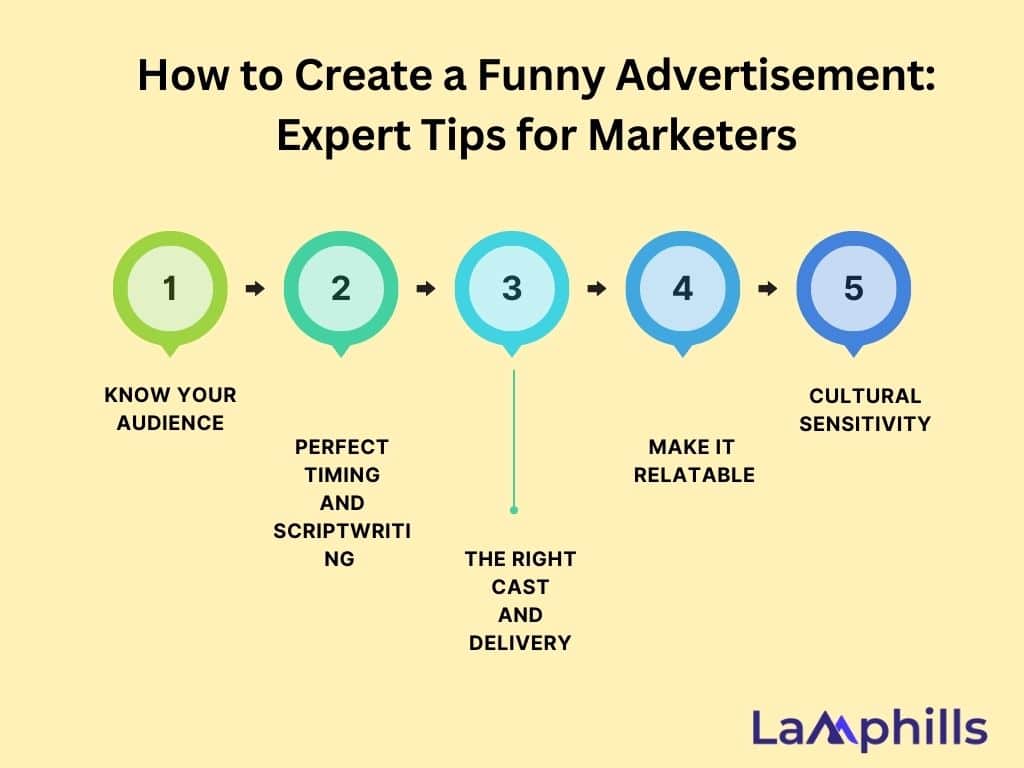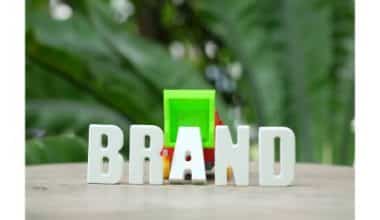Advertising may have evolved over the years, but one thing remains constant: it’s one of the most powerful tools brands can use to connect with audiences. In recent years, funny advertisements have captured our attention and gone viral, becoming part of cultural conversations worldwide. I’ve witnessed brands leverage humor to create lasting impressions and increase engagement.
According to a Nielsen study, humor increases brand recall by up to 50%, making it a key tool for marketers looking to leave a lasting impression. Marketing Charts also report that while serious ads often lead to higher emotional engagement, funny ads tend to drive more social shares and brand recall, which is effective for awareness campaigns.
So, allow me to walk you through 10 funny advertisements that have captured audiences globally. These ads showcase humor and smart marketing strategies that result in massive brand awareness and positive audience response.
Key Points
- According to a Nielsen study, humor increases brand recall by up to 50%, making it a key tool for marketers looking to leave a lasting impression.
- Funny advertisements drive more social shares and brand recall, which is effective for awareness campaigns.
- To fully maximize its impact, marketers must understand the nuances of humor and execute it effectively.
- Brands that use humor effectively not only entertain but also build stronger connections with their audiences.
Understanding Funny advertisements
Funny advertisements have the power to elevate a brand’s image, make it more relatable, and leave a lasting impression on the audience. To fully maximize its impact, marketers must understand the nuances of humor and execute it effectively. This ensures that they create entertaining and converting ads that’ll result in increased sales and retain customers.
What is the Impact of Funny Ads on Brand Loyalty?
Humor makes brands more approachable, and when done consistently, it can foster long-term loyalty. It has the unique ability to humanize brands and create stronger emotional connections with consumers.
What Makes a Funny Ad Memorable?
I’ve studied funny advertisements for a while now, and the following are some of the things that make them memorable:
- Unexpected Twists: Ads like Geico’s “Unskippable” series surprise viewers, making the humor more impactful and memorable.
- Clever Writing: Ads like M&M’s Super Bowl ad, where the characters “eat themselves,” combine clever writing with absurd humor, making them stand out.
How to Create a Funny Advertisement: Expert Tips for Marketers

Creating funny advertisements requires a fine balance between creativity, timing, and a good understanding of the audience. I’ve seen how humor can transform a campaign from ordinary to unforgettable. The following are actionable tips drawn from my experience in crafting successful funny ad campaigns:
#1. Know Your Audience
Humor is subjective, and what might be funny to one demographic could fall flat with another. Before creating any humorous ad, dive deep into understanding your target audience’s preferences and cultural sensitivities. For instance, Gen Z often enjoys meme-style humor and internet culture, while Millennials might resonate more with nostalgic references or relatable life scenarios. Always align your comedic style with your audience’s sense of humor.
#2. Perfect Timing and Scriptwriting
Timing is everything in humor. In advertising, it’s important to build anticipation and land the punchline at just the right moment. For example, Geico’s “Hump Day” ad used a slow build-up and a sharp, memorable punchline, making it instantly shareable. A well-written script should not only be funny but also flow naturally within the narrative of the ad, connecting the humor seamlessly to the brand message.
#3. The Right Cast and Delivery
Casting can make or break a funny ad. Talented actors or even influencers with a natural flair for comedy can elevate the script. Take Isaiah Mustafa in Old Spice’s “The Man Your Man Could Smell Like”—his deadpan delivery and over-the-top performance turned a simple ad into a viral sensation. When casting, prioritize comedic timing and the ability to deliver lines in a way that feels authentic.
#4. Make It Relatable
The best funny ads are grounded in relatable experiences. Ads like Progressive’s “Dr. Rick” capitalized on the universal fear of “turning into your parents,” making audiences laugh because they could see themselves in the characters. Humor based on shared experiences fosters a deeper connection between the brand and the audience, ensuring the message sticks.
#5. Cultural Sensitivity
When crafting global campaigns, humor should be tailored to each market. What works in the U.S. might not resonate in Japan or France, where humor tends to be more subtle or surreal. Brands like McDonald’s have mastered this by adapting their humor to fit the local culture, ensuring the joke lands well across various regions.
10 Funny Advertisement Examples
The following are the top 10 funny advertisements examples:
#1. Amazon Alexa: “Before Alexa” (2020)
This Super Bowl ad imagines a world before Alexa, where famous comedian Ellen DeGeneres and his wife, Portia de Rossi, hilariously struggle to get things done. The ad shows different historical moments where people failed to provide instant information, heating, or music – things that Alexa does effortlessly today.
The absurdity of asking butlers or servants to “turn down the temperature” in medieval times or getting a jester to play music instead of Spotify is comically anachronistic. It’s a perfect mix of humor, nostalgia, and technology.
With over 47 million views across platforms, this ad generated massive buzz, leading to an 8.1% brand lift according to iSpot.tv. Humor effectively demonstrated Alexa’s utility by showing the stark contrast to historical inefficiency.
#2. Rocket Mortgage: “Certain Is Better” (2021)
Tracy Morgan humorously illustrates the difference between being “certain” and “pretty sure” in life. From house-hunting to life-threatening situations like jumping off a cliff, the ad uses comedic exaggeration to show why certainty is necessary when making big financial decisions.
The humor comes from Morgan’s deadpan delivery in increasingly ridiculous situations where “pretty sure” just doesn’t cut it. Jumping off a cliff or facing bears with just a “pretty sure” attitude results in laugh-out-loud moments.
The ad achieved a significant 12% brand lift for Rocket Mortgage, according to research from Adweek, and was one of the top-rated Super Bowl ads in 2021. The use of humor helped build consumer trust and awareness in a traditionally “dry” financial services space.
#3. Match.com: “Match Made in Hell” (2020)
This clever ad from Match.com features Satan and the year 2020 finding love in a hilariously apt depiction of the disastrous year. The devil matches with “2020” on a dating app, and the couple spends time together causing chaos in an empty gym, stealing toilet paper, and laughing under burning skies.
The ad perfectly captures the shared cultural experience of the chaos and absurdity of 2020, making the exaggerated pairing of Satan and the year both timely and funny.
Match.com saw a 30% increase in user engagement on social media following the ad’s release, according to Business Insider. This timely and humorous take resonated with the global audience, making it one of the most memorable ads of the year.
#4. Uber Eats: “Wayne’s World & Cardi B” (2021)
In this throwback to the iconic Wayne’s World skits, Mike Myers and Dana Carvey reprise their roles to promote local restaurants via Uber Eats, alongside rapper Cardi B. The ad is full of fourth-wall-breaking humor, nostalgia, and celebrity appeal.
The playful banter between Wayne, Garth, and Cardi B, along with their over-the-top endorsements (like Wayne’s hilarious “No Celeb Cameo” promise), makes this ad irresistibly funny.
Uber Eats reported a 5% rise in brand consideration post-campaign, and the ad went viral, with over 80 million views on YouTube. The mix of nostalgia and modern celebrity appeal hit the right notes for both younger and older audiences.
#5. GEICO: “Tag Team’s Scoop! There It Is” (2021)
A couple struggles to cook in their kitchen, but instead of getting frustrated, they’re interrupted by Tag Team (the rap duo behind the ’90s hit “Whoomp! (There It Is)”), who burst into song with a hilarious cooking-themed remix, “Scoop! There It Is.”
The comedic timing, the absurd scenario, and the infectious enthusiasm of Tag Team all combine to make this ad one of the funniest and catchiest of the year. It’s playful and cleverly uses a familiar song in a new context.
This ad received over 14 million views within weeks of airing and is credited with giving Geico one of the highest ad recall rates in 2021, according to iSpot.tv. It also sparked a viral trend of people making their own “Scoop!” videos on TikTok.
#6. M&M’s: “Come Together” (2021)
In this lighthearted ad, people apologize for everyday mishaps (like accidentally calling someone “Karen” or sending an inappropriate text) by offering packets of M&M’s. The ad stars comedian Dan Levy, who hilariously promises not to eat any more M&M’s — only to break that promise.
The humor lies in the absurdity of using M&M’s as a fix for life’s awkward situations. Dan Levy’s comedic timing, paired with relatable moments, adds to the ad’s effectiveness.
In terms of its impact, the ad ranked high on Ad Age’s “Super Bowl Ad Meter,” with a brand lift of 9% post-campaign. The relatable and comedic tone struck a chord with viewers, making it a standout among Super Bowl 2021 ads.
#7. Cadbury: “Crème Egg Golden Goobilee” (2021)
To celebrate the 50th anniversary of the Cadbury Crème Egg, this playful ad features various people (and pets!) indulging in the gooey treat in funny, sometimes ridiculous ways. Whether it’s dogs eating, spooning, or licking the eggs, the ad captures the joy of Cadbury’s iconic product.
The visual humor is at the forefront here. Seeing dogs and people over-enthusiastically enjoying their Crème Eggs in unconventional ways brings out the comedy.
Cadbury’s sales saw a 10% increase during the campaign, according to The Drum, showing that lighthearted humor and nostalgia are still effective in product advertising.
#8. Expedia: “All By Myself” (2021)
Featuring actor Rashida Jones, this ad humorously portrays the sadness of not traveling during the pandemic, with Jones sitting at home in travel clothes, longing for her next vacation. All the while, the song “All By Myself” plays in the background, adding to the comedic drama.
The exaggerated scenes of Rashida Jones packing and repacking her suitcase, staring longingly at travel magazines, and sitting in a swimsuit on her couch make the ad both relatable and funny.
Expedia’s travel bookings saw a 15% uptick post-campaign as consumers began planning post-pandemic trips. The ad hit a relatable nerve with travelers around the world.
#9. Aldi UK: “Kevin the Carrot’s Christmas” (2021)
Aldi’s recurring Christmas character, Kevin the Carrot, embarks on a funny adventure with Santa Claus. This year, Kevin finds himself lost in the snow, only to be hilariously rescued in a Home Alone-style mission.
The humor lies in the Christmas nostalgia and Kevin’s exaggerated, almost heroic journey. The Home Alone reference adds to the light-hearted holiday spirit.
Aldi’s Christmas campaign helped increase their seasonal sales by 8%, according to Retail Gazette.
#10. Progressive Insurance: “Dr. Rick: Becoming Your Parents” (2021)
In this hilarious campaign, Dr. Rick helps young homeowners avoid becoming like their parents. From giving unnecessary advice to strangers to printing out directions, the ad nails the little habits that people pick up as they age.
The ad’s humor is based on sharp observational comedy. Anyone who has watched their parents navigate modern technology or social situations will find themselves laughing in recognition.
In terms of its impact, the “Dr. Rick” campaign saw a 6% boost in brand awareness for Progressive, making it one of the most relatable and funny ad series of 2021.
The Psychology of Humor in Advertising
Humor taps directly into human emotions, creating positive associations with a brand. Studies show that when we laugh, our brains release dopamine, which fosters memory retention and emotional connection. This is why humor in advertising is so powerful—it makes the brand message memorable.
According to a study from the Journal of Advertising Research, humorous ads are 27% more likely to increase consumer intent to purchase compared to non-humorous ads. This makes humor not only memorable but also an effective conversion tool.
Why Do Funny Ads Go Viral?
Funny advertisements go viral for the following reasons:
#1. Emotional Engagement
Humor creates strong emotional reactions, which makes people more likely to share the content. For instance, Snickers’ “You’re Not You When You’re Hungry” ad resonated because it tapped into a shared human experience—hunger-related mood swings—leading it to be shared widely.
#2. Relatability
Viral ads often feature universally relatable situations. Dollar Shave Club’s “Our Blades Are F*ing Great”** resonated with consumers because of its candid, no-nonsense approach, which led to millions of views on YouTube.
#3. Platform Optimization
Ads designed specifically for platforms like TikTok or Instagram are often short, punchy, and easily digestible—perfect for the social media era. A report by Statista found that 92% of mobile video viewers share videos with others, making funny ads prime for viral success.
Lamphills Funny Ads Campaign Planning Template
This is an actionable template that guides you through the steps of creating an effective funny ad campaign:
Lamphills Funny Ads Campaign Planning Template
What Roles Do Celebrities Play in Funny Advertisements?
A report from Forbes indicates that ads with celebrities can increase engagement by up to 20%, especially when the celebrity’s humor aligns with the brand’s image. Celebrities bring instant recognition, and when they’re naturally funny, they can elevate the humor of the campaign. Take Kevin Hart’s Hyundai ad—his energetic personality and humor made the ad more engaging while promoting the car’s safety features.
Funny Ads vs. Serious Ads: Which Is More Effective?
Both ads are effective but cater to different objectives. While serious ads aim to tug at emotional heartstrings, like Budweiser’s Clydesdale commercials, which evoke nostalgia and patriotism, funny ads create joy and laughter, leading to higher shareability.
Conclusion
From an expert marketer’s perspective, funny ads continue to reign supreme in driving engagement, brand awareness, and audience retention. These ads show that humor, when combined with timely cultural references, nostalgia, or clever storytelling, can make a brand stand out. As we’ve seen from the recent examples, brands that use humor effectively not only entertain but also build stronger connections with their audiences.
Whether it’s using pop culture references like Uber Eats’ Wayne’s World, or turning everyday frustrations into hilarious moments like Progressive’s Dr. Rick, humor adds a personal touch that resonates globally. With measurable results such as increased brand recall, higher sales, and significant engagement, funny advertisements prove that laughter truly is a universal language in marketing.
Related Articles
- 75 Unique Business Name Ideas That Will Make You Stand Out
- Transfer Advertising Explained: Boosting Brand Perception Through Strategic Partnerships
- How to Manage Social Media for Your Company: A Guide for Businesses
- How to Build a Professional Social Media Presence: 12+ Tips
- The 15 Most Expensive Handbag Brands in the World






